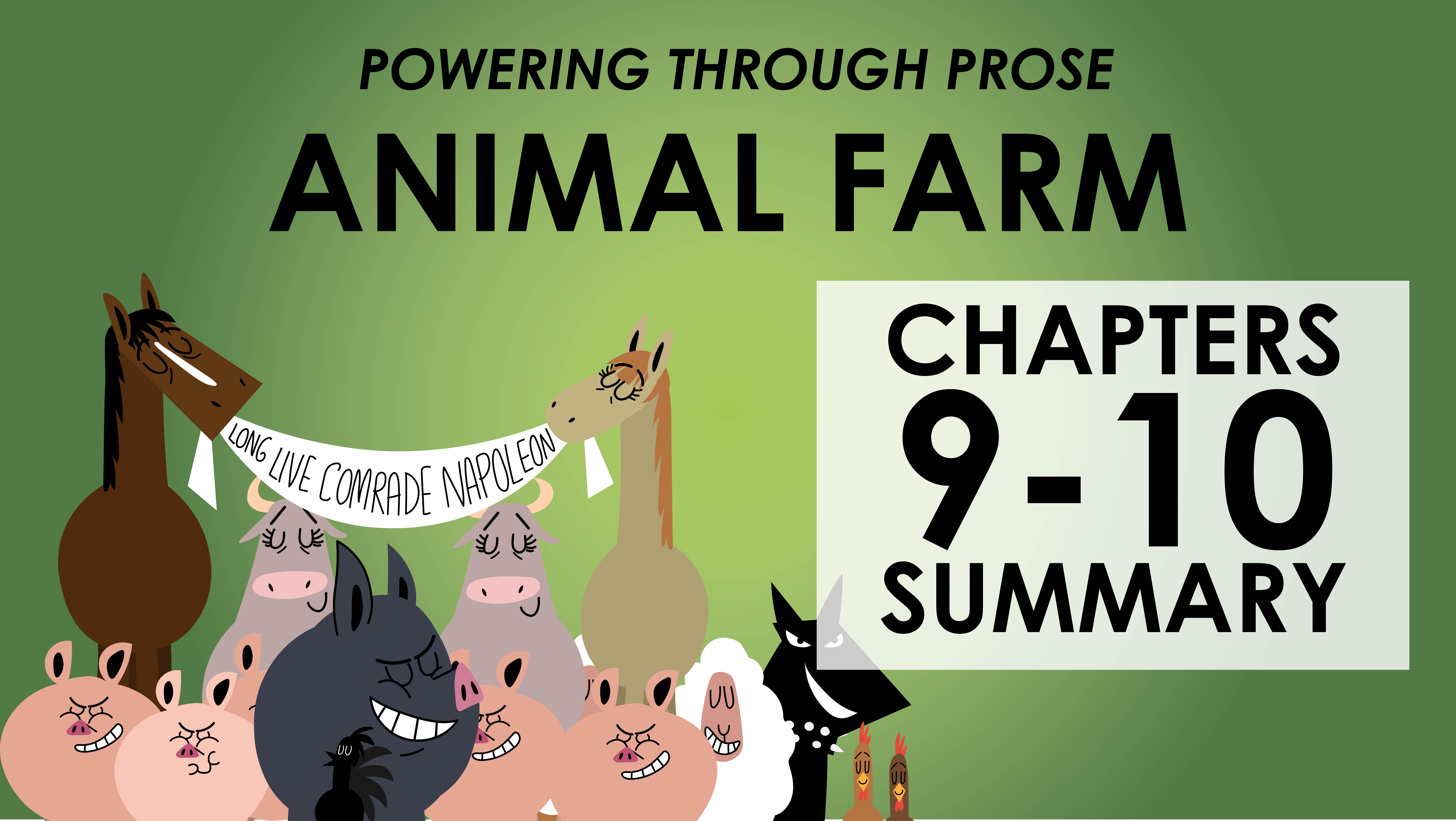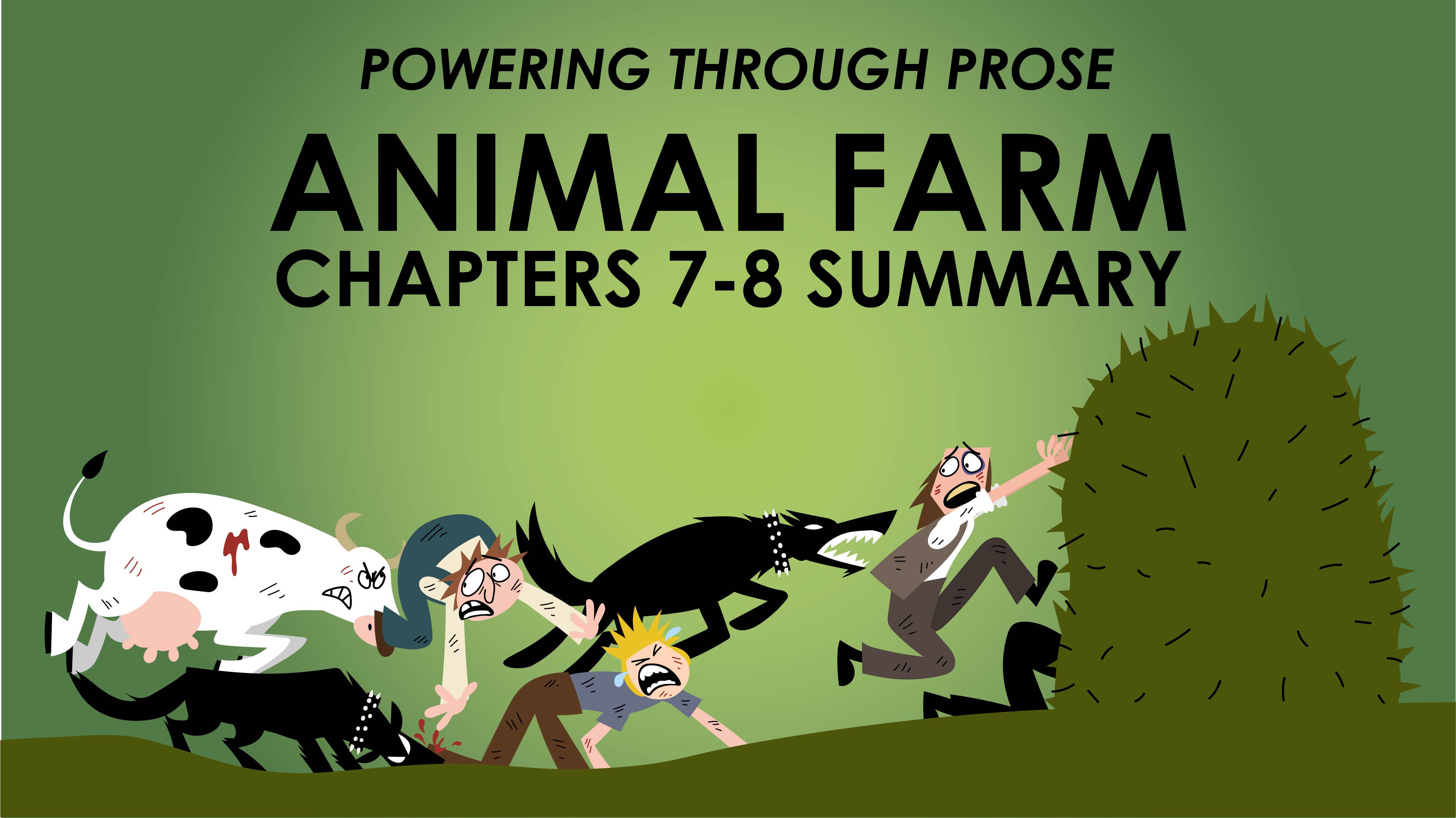Chapter 10 summary of animal farm – Chapter 10 of Animal Farm marks a pivotal juncture in the novel, as the revolution undergoes a profound transformation. Through its rich symbolism and evocative prose, this chapter offers a profound exploration of power, corruption, and the complexities of human nature.
Animal Farm’s characters are vividly portrayed, each representing a facet of society. The pigs, initially symbols of hope and change, gradually morph into oppressive rulers, while the other animals struggle to maintain their newfound freedom. The chapter’s setting is equally evocative, reflecting the shifting political landscape and the ever-present threat of tyranny.
Character Analysis

In Chapter 10 of Animal Farm, the characters continue to play crucial roles in driving the plot and conveying the novel’s themes. Each animal represents a specific aspect of human society, and their interactions highlight the dangers of power, corruption, and the loss of ideals.
The most prominent characters in this chapter are:
- Napoleon: The ruthless and ambitious pig who has seized power on the farm.
- Snowball: Napoleon’s former ally who was driven out of the farm and is now seen as a traitor.
- Squealer: Napoleon’s right-hand pig who uses his eloquence to justify Napoleon’s actions and manipulate the other animals.
- Boxer: The loyal and hardworking horse who represents the proletariat.
- Benjamin: The cynical donkey who represents the intellectuals who see through the regime’s propaganda.
These characters interact in complex ways that highlight the novel’s themes. Napoleon’s power-hungry nature leads him to betray his comrades and establish a dictatorship. Snowball’s exile symbolizes the suppression of dissent and the manipulation of history. Squealer’s skillful use of language demonstrates the power of propaganda and the ease with which the truth can be distorted.
In Chapter 10 of Animal Farm, the animals confront their human overlords, ultimately failing in their rebellion. This failure mirrors the tragic events in Two Blue Vortex Chapter 2 , where a young boy’s dreams of a better world are shattered by the harsh realities of life.
However, the summary of Animal Farm’s Chapter 10 serves as a poignant reminder of the resilience and determination that can exist even in the face of adversity.
Boxer’s unwavering loyalty represents the blind obedience that can be exploited by those in power. Benjamin’s cynicism serves as a reminder that even in the face of tyranny, there are those who refuse to be fooled.
Symbolism and Allegory

In Chapter 10 of Animal Farm, George Orwell employs a rich tapestry of symbols and allegories to enhance the chapter’s meaning and explore its broader themes. These elements reflect the historical and political context of the novel, providing a deeper understanding of the events and characters.
As Chapter 10 of Animal Farm unfolds, the farm’s new leader, Napoleon, faces increasing opposition. To quell this, he decides to take a trip to the neighboring Pinchfield Farm, where he encounters the cunning Mr. Pilkington. As Napoleon and Pilkington strike up a friendship, a shocking revelation unfolds back at Animal Farm.
Head over to Animal Farm Chapter 5 to discover how the animals’ dreams of a just society begin to crumble as Napoleon’s iron fist tightens.
The windmill, a symbol of progress and modernization, becomes a focal point of the chapter. Its destruction represents the setbacks and challenges faced by the animals in their quest for a better society.
Chapter 10 of Animal Farm climaxes in a brutal purge, leaving a haunting reminder of the dangers of absolute power. In the realm of human relationships, a similar dynamic plays out in company and private life chapter 1 , where the lines between work and personal life often blur, potentially eroding individuality and well-being.
Yet, as the animals of Animal Farm learned, the fight for freedom and individuality must continue, even in the face of adversity.
The Windmill, Chapter 10 summary of animal farm
- Progress and Modernization: The windmill represents the animals’ desire to advance and improve their living conditions.
- Obstacles and Challenges: The destruction of the windmill symbolizes the difficulties and setbacks that the animals encounter in their pursuit of progress.
- Animal Nature: The windmill’s destruction also highlights the inherent limitations of the animals’ abilities and the challenges they face in overcoming their animal instincts.
The Pigs’ Manipulation
The pigs’ manipulation of the other animals through propaganda and fear serves as an allegory for the dangers of totalitarianism. Their use of slogans and fear-mongering tactics reflects the tactics employed by oppressive regimes.
- Slogans and Propaganda: The pigs’ use of slogans like “Four legs good, two legs bad” and “All animals are equal, but some animals are more equal than others” illustrates how propaganda can be used to control and manipulate the masses.
- Fear-Mongering: The pigs’ constant warnings about the dangers of human threats create an atmosphere of fear and paranoia, making the animals more compliant and submissive.
- Cult of Personality: The pigs’ elevation of Napoleon to a position of absolute power, complete with a cult of personality, parallels the rise of totalitarian dictators.
These symbols and allegories enhance the chapter’s meaning by providing a deeper understanding of the novel’s themes and historical context. They serve as a powerful reminder of the dangers of totalitarianism, the importance of progress, and the limitations of animal nature.
Setting and Atmosphere

Chapter 10 of Animal Farm takes place on the farm after the pigs have taken over. The setting is bleak and desolate, reflecting the oppressive atmosphere that has descended upon the animals.
The once-bustling farm is now a place of fear and uncertainty. The pigs have become increasingly tyrannical, and the other animals live in constant fear of being punished or killed. The atmosphere is heavy with tension and paranoia, as the animals are constantly watching each other for signs of disloyalty.
Symbolism of the Setting
The bleak and desolate setting of Chapter 10 is a powerful symbol of the oppressive atmosphere that has descended upon the farm. The once-vibrant farm is now a place of fear and uncertainty, reflecting the loss of freedom and happiness that the animals have experienced under the pigs’ rule.
The dilapidated buildings and overgrown fields are a reminder of the neglect and decay that has taken hold of the farm. The animals are no longer able to enjoy the simple pleasures of life, as they are constantly forced to work and live in fear.
Foreshadowing Future Events
The setting of Chapter 10 also foreshadows future events in the novel. The bleak and desolate landscape is a warning of the dangers of tyranny and the importance of fighting for freedom.
The animals’ fear and paranoia are a sign of the growing discontent that will eventually lead to a rebellion against the pigs. The dilapidated buildings and overgrown fields are a reminder of the fragility of the animals’ newfound freedom and the importance of vigilance against those who would seek to take it away.
Plot Development: Chapter 10 Summary Of Animal Farm

In Chapter 10 of Animal Farm, the animals’ rebellion against Mr. Jones takes a dramatic turn. Here’s a summary of key events and their significance:
The Battle of the Windmill: Mr. Frederick and his men launch a surprise attack on Animal Farm, destroying the newly built windmill. This event symbolizes the fragility of the animals’ revolution and the constant threat of outside forces. It also marks a turning point in the animals’ struggle, as they realize the true extent of the challenges they face.
Conflicts and Turning Points
Internal Conflict: The animals are divided over how to respond to the attack. Some want to fight back, while others advocate for diplomacy. This internal conflict highlights the challenges of maintaining unity and purpose within the animal community.
External Conflict: The attack by Mr. Frederick intensifies the external conflict between Animal Farm and the human world. It demonstrates the ongoing threat posed by humans and the need for the animals to remain vigilant.
Rising Action: The events in Chapter 10 contribute to the rising action of the novel. The destruction of the windmill and the subsequent internal and external conflicts raise the stakes and set the stage for a climax.
Final Wrap-Up

Chapter 10 of Animal Farm is a masterfully crafted chapter that serves as a microcosm of the novel’s broader themes. It is a sobering reminder of the fragility of revolution and the constant struggle against the forces of oppression. Orwell’s timeless allegory continues to resonate deeply, offering a profound commentary on the nature of power and the human condition.

